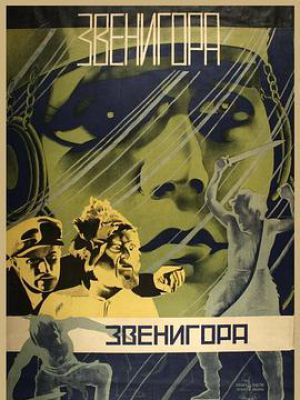
忍尼戈拉
(1928)7.5分
评分:
-
音画
0.0分 / 0人
-
表演
0.0分 / 0人
-
剧情
0.0分 / 0人
Звенигора
- 编辑
- 主演:GeorgiAstafyev/NikolaiNademsky/VladimirUralsky/LesPodorozhnij/SemyonSvashenko/I.Selyuk/L.Barné/L.Parshina/P.SklyarOtawa/A.Simonov更多
- 类型:剧情/奇幻 制片地区:苏联 影乐酷ID:5009353dv IMDB:tt0019611
- 语言:无对白 片长:Russia: 90 分钟 / USA: 109 分钟 上映:1928-05-08(苏联)
-
简介:Zvenigora is, in terms of narrative and content, one of the most remarkable avant-garde films of an exuberantly experimental period. The film uses the central construct of a legend regarding treasure buried in Mount Zvenigora to build a montage of scenes praising Ukrainian industrialisation, attacking the European bourgeoisie, celebrating the beauty of the Ukrainian steppe and re-telling ancient myths. The narrative is built upon Modernist lines, disregarding the traditional, novelistic storytelling techniques and instead using abrupt shifts in time and using the constructive devices of avant-garde poets such as Blok, Bely and Mayakovsky to create a picture of modern Ukraine that pushes in several directions at once. There are some incredibly striking tableaux that require the viewers to create a structure for themselves (such as the Bolshevik soldier directing his own execution) although the climax does draw the preceding events together, combining the dialectical threads of modern industry and the old man's myth together in two exhilarating scenes. The cinematography is fascinating - elements of the style of Eisenstein, Pudovkin, Protazanov and Kuleshov are recognisable, yet Zvenigora seems completely different to any of them. The juxtaposition of rapid montages, swift city tours and slow, poetic journeys around the countryside is powerful, and the mythical scenes, although winding, are beautifully realised with a dreamlike quality to them. Zvenigora is not Dovzhenko's masterpiece, if only because his Earth (1930) is one of the greatest Russian films ever made. However, it is highly recommended, although if you are new to Russian film of the period it is probably not the best place to start.



